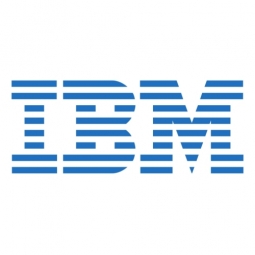Customer Company Size
Large Corporate
Region
- America
Country
- United States
Product
- IBM Security QRadar SIEM
- IBM Security QRadar Log Manager
- IBM Security X-Force Threat Intelligence
- IBM Global Technology Services — Technical Support Service
Tech Stack
- Security Information and Event Management (SIEM)
- Log Management
- Anomaly Detection
- Vulnerability Management
Implementation Scale
- Enterprise-wide Deployment
Impact Metrics
- Cost Savings
- Productivity Improvements
Technology Category
- Cybersecurity & Privacy - Network Security
- Cybersecurity & Privacy - Security Compliance
Applicable Industries
- Cities & Municipalities
Applicable Functions
- Business Operation
Use Cases
- Cybersecurity
Services
- Cybersecurity Services
- System Integration
About The Customer
Established in 1834, Marietta, Georgia, is located just 15 miles northwest of Atlanta. The municipality’s economic development initiatives, police and fire departments, parks and recreation facilities, public works, environmental services, and power utility and water departments serve approximately 57,000 citizens and roughly 6,500 businesses. A city manager oversees daily operations, managing approximately 730 employees in 10 departments.
The Challenge
The City of Marietta, Georgia, had a public-facing digital presence that it needed to defend against a continual assault of potentially malicious digital incursions. The volume of anomalous network activity, ranging from simple irregularities to serious security breaches, required constant, resource-intensive vigilance, which taxed the city’s small security team.
The Solution
To secure both its network and citizen confidence, the city deployed a sophisticated intelligence solution that integrates security information and event management (SIEM), log management, anomaly detection and configuration, and vulnerability management to identify and frustrate the most severe security events. The solution integrates sophisticated number-correlation functions and complex, security based algorithms to identify and isolate anomalous activity within the tremendous volumes of data collected and stored across the city’s operations.
Operational Impact
Quantitative Benefit

Case Study missing?
Start adding your own!
Register with your work email and create a new case study profile for your business.
Related Case Studies.

Case Study
Turning A Stadium Into A Smart Building
Honeywell created what it called the “intelligent system” for the National Stadium in Beijing, China, turning the venue for the opening and closing events at the 2008 Summer Olympics into a “smart building.” Designed by highly controversial artist Ai Weiwei, the “Bird’s Nest” remains one of the most impressive feats of stadium architecture in the world. The 250,000 square meter structure housed more than 100,000 athletes and spectators at a time. To accommodate such capacity, China turned to Honeywell’s EBI Integrated Building Management System to create an integrated “intelligent system” for improved building security, safety and energy efficiency.
.png)
Case Study
Smart Street Light Network (Copenhagen)
Key stakeholders are taking a comprehensive approach to rethinking smart city innovation. City leaders have collaborated through partnerships involving government, research institutions and solution providers. The Copenhagen Solutions Lab is one of the leading organizations at the forefront of this movement. By bringing together manufacturers with municipal buyers, the Copenhagen Solutions Lab has catalyzed the development and deployment of next-generation smart city innovations. Copenhagen is leveraging this unique approach to accelerate the implementation of smart city solutions. One of the primary focus areas is LED street lighting.

Case Study
Buoy Status Monitoring with LoRa
The Netherlands are well-known for their inland waterways, canals, sluices and of course port activities. The Dutch Ministry of Infrastructure indicates that there are thousands of buoys and fixed items in and near water environments that would profit from IoT monitoring. One of the problems with buoys for example, is that they get hit by ships and the anchor cable breaks. Without connectivity, it takes quite some time to find out that something has happened with that buoy. Not to mention the costs of renting a boat to go to the buoy to fix it. Another important issue, is that there is no real-time monitoring of the buoys at this moment. Only by physically visiting the object on the water, one gains insight in its status.

Case Study
Barcelona Case Study
Barcelona’s heavy traffic and its associated high levels of pollution were the primary factors that motivated some companies and universities to work on strategies for improving traffic in the city centre. Bitcarrier is one of the technologies involved in the In4Mo Project, whose main objective is to develop the applications that form the core of smart mobility, one of the fundamental pillars of the smart city concept.

Case Study
China Mobile Smart Parking
Smart Parking, powered by NB-IoT technology, is making it easier for drivers to find free parking spots. Cities can better manage their parking assets and maximize the revenue available to them as a result. Drivers searching for parking create congestion and pollution by circling and hunting for available parking. Smart Parking services are able to significantly ease these problems by guiding a driver directly to a parking space.







